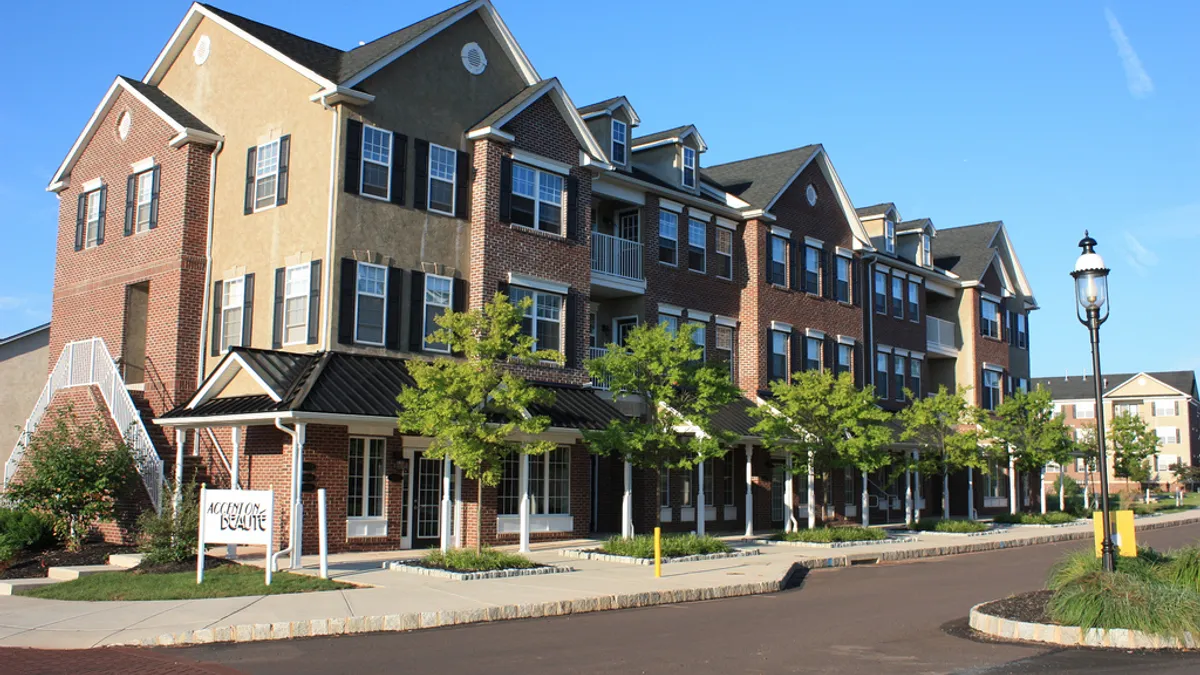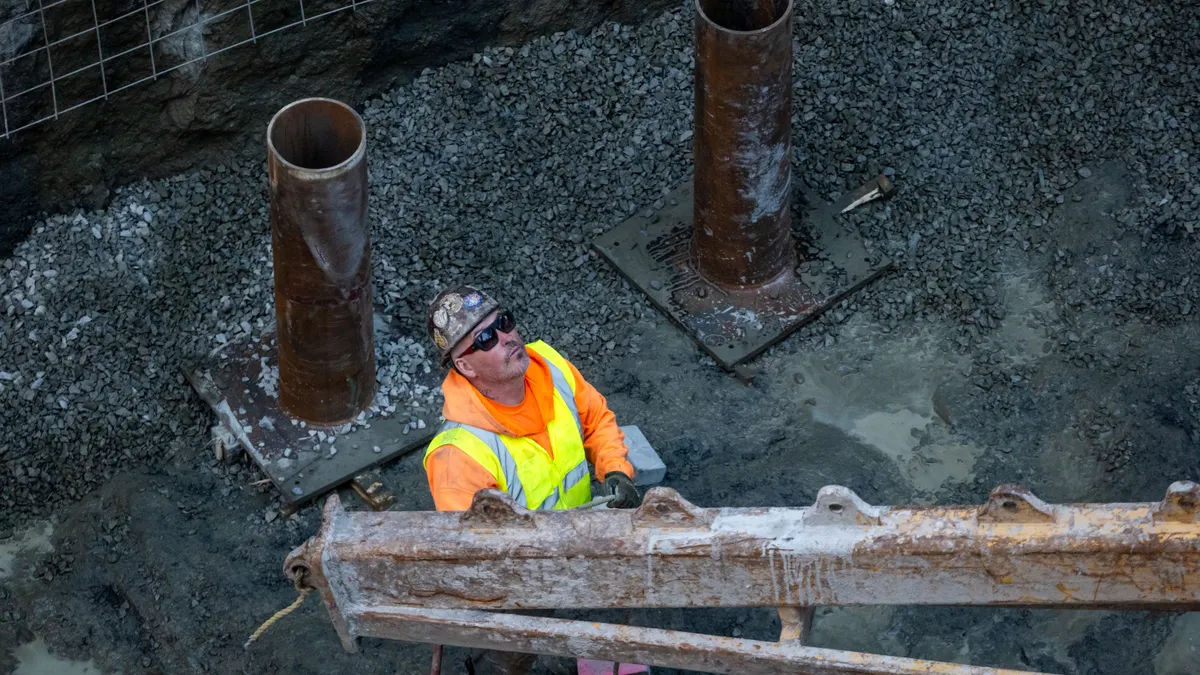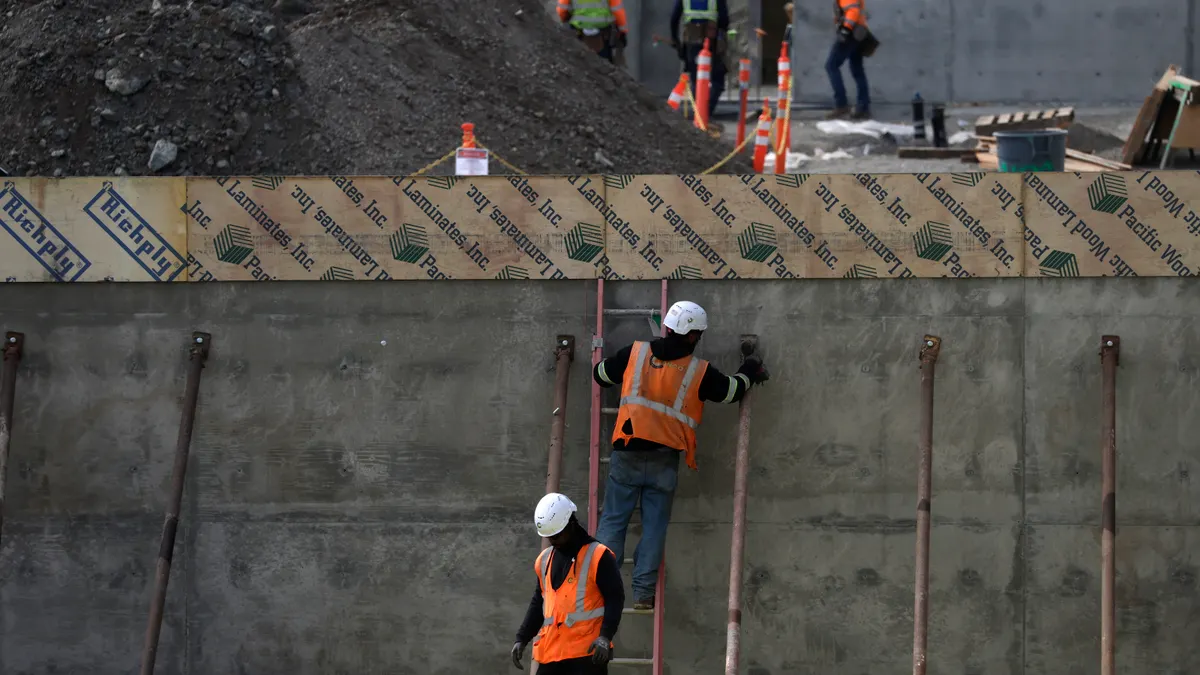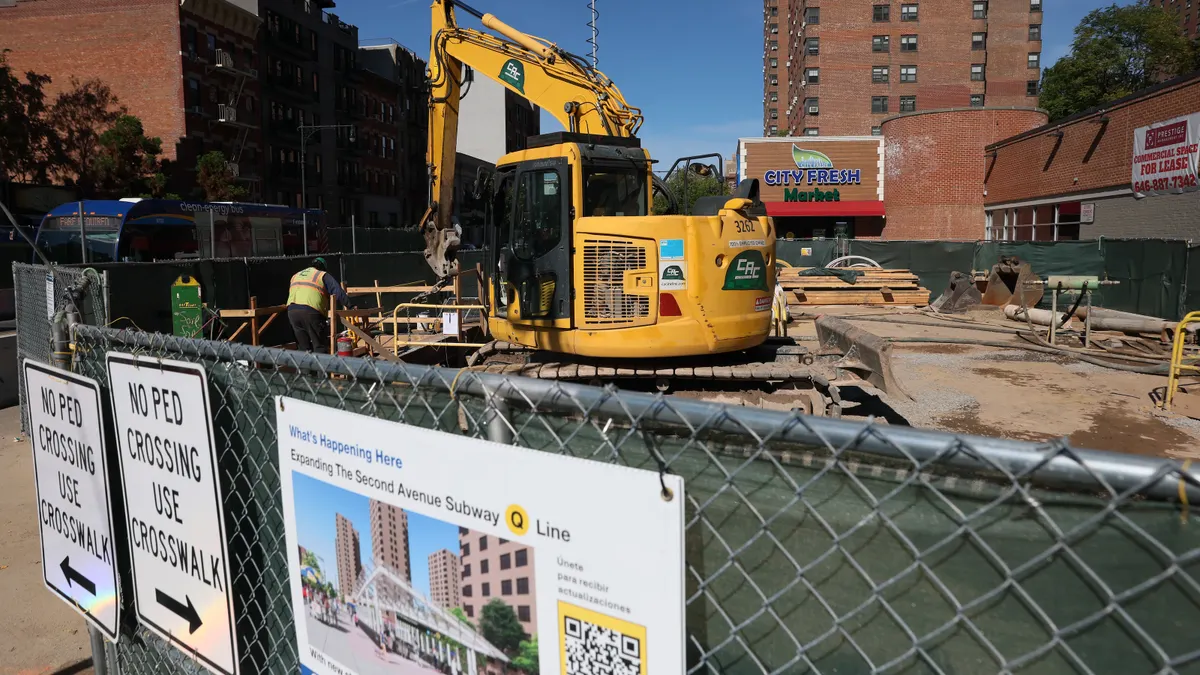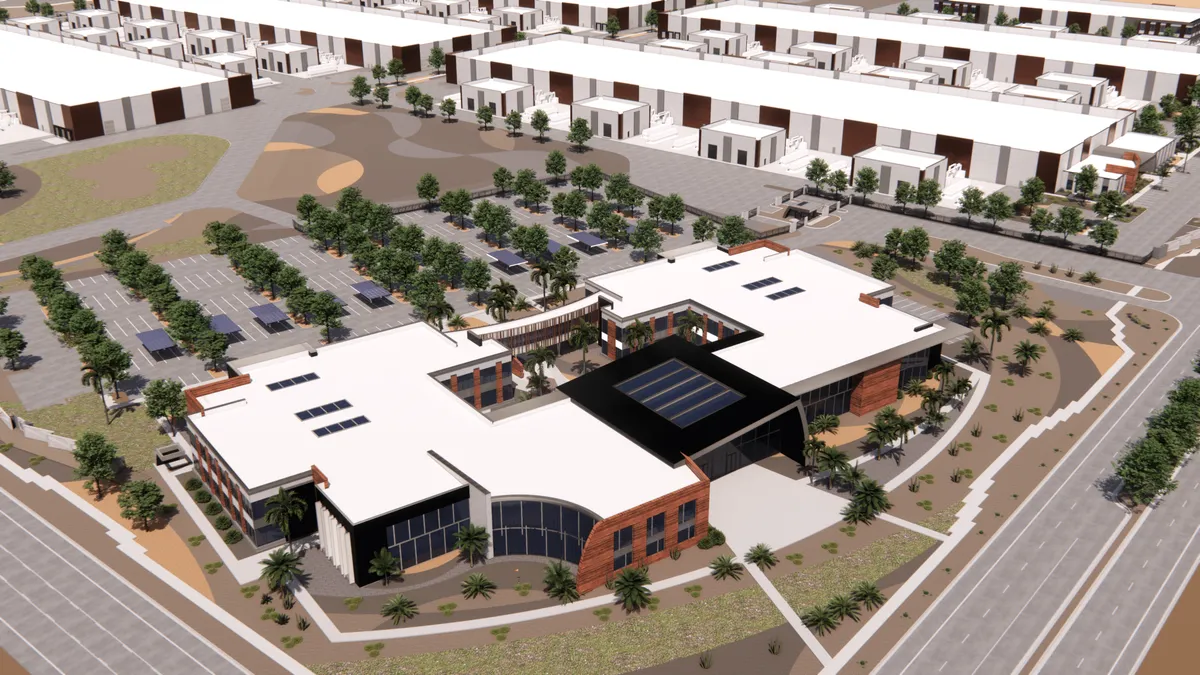Is the generation that rented its way through the recession ready for homeownership? Some builders think so and are beginning to explore ways to capitalize on pent-up demand. But turning the youngest Gen-Xers and the oldest millennials into homebuyers won’t happen overnight.
Additionally, it’s going to require more than the promise of walkable communities and energy-efficient appliances to propel the next — and largest — class of homebuyers into action. Economists predict that it could take first-time homebuyers at least three years to return to their pre-recession share of accounting for 40% of home sales. That group currently claims a 33% share, up from 29% at the market’s trough, according to Jonathan Smoke, chief economist for real-estate listing website Realtor.com.
“We think the potential is there for 2017 to be the year that we get much closer to normal,” he said.
Industry watchers cite wage growth, affordable inventory in markets with attractive job prospects, current owners of existing homes trading up into larger properties and home-finance reform as necessary for this group to contribute to the housing market’s recovery.
How did the industry get here?
The First-Time Homebuyer Tax Credit for homes purchased in 2008, 2009 or 2010 encouraged demand for homes through the market’s trough. Because the market was generally tight, new homes built during that period trended smaller and more value-engineered. When the credit expired in 2010, demand for smaller, lower-value homes dropped and builders went back to building mostly larger properties in tandem with continued recovery in the market. First-time buyers continued to seek existing homes, in many cases foreclosed properties from the bank.
Through the recession and into the recovery, the owners of existing homes have failed to do as expected and trade up into larger, newly built homes in great enough numbers to free up sufficient existing inventory for first-time buyers. Meanwhile, a shortage of skilled labor and a dearth of lots is driving up construction costs, putting a damper on new building activity.
That’s created a rift in the market. “The typical gap between median new-home price and median existing-home price from 1990 to the mid-2000s was $20,000,” said Robert Dietz, chief economist at the National Association of Homebuilders. “Since 2012, it’s been more than $70,000.”
Existing-home sales dipped 0.9% between July and August 2016 to 5.33 million and were only slightly ahead (0.8%) year-over-year, according to the National Association of Realtors. Of that group, first-time buyers accounted for 31% in August, down from 32% in July and year-over-year. Additionally, housing starts dipped 5.8% in August to 1.142 million from July, with most of the losses felt in the single-family category.
Overall, the nation’s housing inventory declined for the fifth-straight quarter in the third quarter of 2016 and is down nearly 7% year-over-year, according to Trulia, with starter and trade-up homes taking a hit, falling 10.7% and 9.2%, respectively, during the period.
In 2015, the national homeownership rate was just 63.7%, continuing an "unprecedented" 10-year slide, according to the Joint Center for Housing Studies at Harvard University in its 2016 State of the Nation's Housing report, as an increasing number of people pay close to half of their income in rent, and the rental inventory added to the market disproportionately serves higher-income buyers.
Where is the industry now?
The number of older millennials — from 25 to 34 years old — looking at buying a home has grown in the last two years, Smoke said, driven by the economy’s continued recovery and their own life progression. “Last year, the median age of the millennial homebuyer was 30, and there were 4.4 million people turning 30 this year,” he said. “We’re seeing more people now forming households, getting married, having children or a second child.” Life events that were delayed during the recession are now coming online and driving consumer decisions, including homebuying.
Barriers to this group’s entry into the home-buying market include high student debt, rising rents, and limited wage growth, which make it difficult for them to save for a down payment — even if they’d have no problem qualifying. On the flip side, those rising rents are encouraging many would-be homeowners to recognize the investment value of a home.
The most active markets among younger buyers today had a high millennial headcount to begin with, and were experiencing strong job growth, Smoke said, with an emphasis on the technology and engineering fields, where above-average salaries coupled with the low local cost of living allow people to more easily save for a down payment. The low cost of living and regulations in those markets mean the homes are priced below the national average and therefore require a smaller down payment.
A recent ranking from Realtor.com listed Dallas-Forth Worth suburb Watauga, TX, as the top zip code nationally for homebuying activity, with metros in California, Colorado, Missouri, Oregon, Massachusetts, and elsewhere in Texas filling out the top 10. “Consumers are feeling confident," Smoke said. "They’re in a better economic situation than they have been, and that especially with first-time buyers is a key to enabling them to be able to purchase."
The average down payment nationwide this year is 11%, according to Smoke, but can range from as low as 5% to 20% in the priciest West Coast markets. That means a first-time buyer can get into some of the lower-priced markets with less than $20,000 down, versus a typical down payment north of $100,000 in costlier markets.
According to Smoke, secondary metropolitan statistical areas including Crestview-Fort Walton Beach-Destin, FL, Pittsburgh, PA, and Provo-Orem, UT, are the leading markets for first-time home buyers, where that group accounts for at least 40% of the purchase mortgage market. They're followed by Baton Rouge, LA; Des Moines, IA; Sioux Falls, SD; Lafayette, LA; Milwaukee; Grand Rapids, MI; and McAllen-Edinburg-Mission, TX, as the leading MSAs for homebuying among this group.
Builders are getting in the game
It’s no secret that there’s ample pent-up demand among aspiring homeowners. The question is where and how that demand will be realized.
Townhomes are one area of recent growth that can be tied to a renewed interest in homeownership among young buyers. A recent NAHB analysis of Census Bureau data on housing starts and completions reported townhouse construction was up 25% year-over-year at the end of the second quarter of 2016 and that it accounted for nearly 13% of all single-family starts during the first quarter. That’s the most since 2008.
The NAHB cites homebuyer desire for medium-density, walkable neighborhoods that co-locate residential properties and amenities as a driver of townhouse construction. As a result, builders are looking to that trend as one solution for new construction in high-density areas near urban centers — another NAHB survey from July 2015 found that nearly half of respondents would trade a lengthy commute for a small yard as builders look to the townhome.
“Somebody who wants to be in more urban areas, or with infill projects, we can go with townhomes into smaller pieces of land,” said Kelly Thomas, national director of marketing for Orlando, FL–based Mattamy Homes. “We might be able to pick up something that’s closer to employment centers.” She said the company, which already built townhomes, is not looking at how that typology can serve the entry-level buyer. “We have to start venturing out a little bit further to the outskirts of your larger cities in order to get that [lower] cost that you’re looking for.”
Other builders are looking to single-family in order to reach younger, first-time buyers.
Earlier this month, Meritage Homes unveiled LiVE.NOW., a category of homes ranging from 1,800 square feet to 2,500 square feet and priced from the low $200,000s. The company is launching the line in Phoenix and Houston, with plans for a broader rollout. In 2014, D.R. Horton debuted its Express Homes, also targeting the entry-level buyer, which sold 2,000 properties in the first quarter of 2015 — 18% of the company’s total sales.
National builders with a presence in a diversity of markets are most likely to be able to target the entry-level buyer through single-family new construction, Dietz said, using their scale to counter the high regulatory costs of new construction. D.R. Horton ranked No. 1 on Builder magazine's list of the 100 largest homebuilders in the U.S., while Meritage was listed in the No. 7 spot.
In May, The Wall Street Journal reported that the share of new homes priced under $200,000 accounted for just 19% of the overall market, down from 38% in 2011. Regulatory costs, including impact fees, utility connections, permits and even the cost of implementing safety procedures, have raised the price of a new home by 30% in the last five years and make up nearly a quarter of its price tag, according to a report earlier this year from the NAHB.
“Today in the market it costs about $40,000 to put a lot in the ground,” said Michelle Campbell, the Atlanta division president for homebuilder Taylor Morrison, where the company has its largest focus on entry level. “That’s not including the cost of land. … Unless you’re buying lots that were developed before the recession, it’s very difficult to make a go at those [entry-level] prices.”
Making millennial homeowners
An increase in household formations among individuals in their late 20s and early 30s has led to a surge in rental demand. Right now, household formations are at approximately 1 million a year, and Dietz said he’d like for them to get back to 1.2 million annually. Those renters should soon move into the for-sale market, with most of them going into existing homes and the current owners of those existing homes trading up to larger new homes.
“Everything in the housing market is a ladder,” Dietz said. “If you have blockages anywhere along that ladder, it’s going to be difficult to get a full operation of the market. We need some additional inventory on the existing side to get those Gen-Xers who currently occupy an entry-level home to want to buy a larger, new home. They’re going to have to put their home on the market for that millennial to buy, and that’s going to be a bit of a challenge going forward.”
That will be a multiyear process, Dietz said, noting that the growth rate for single-family construction isn’t likely to surpass 10% to 12% in the coming years, in large part due to an enduring labor shortage and historical lows in lot availability.
“There’s only so many addition lots that can be added to the system,” Dietz said. “If you don’t have that volume growth for construction, it’s hard to get the increase in scope of the kinds of homes being offered into the market. It’s a multiyear process. It’s just part of the recovery that’s been taking place.



